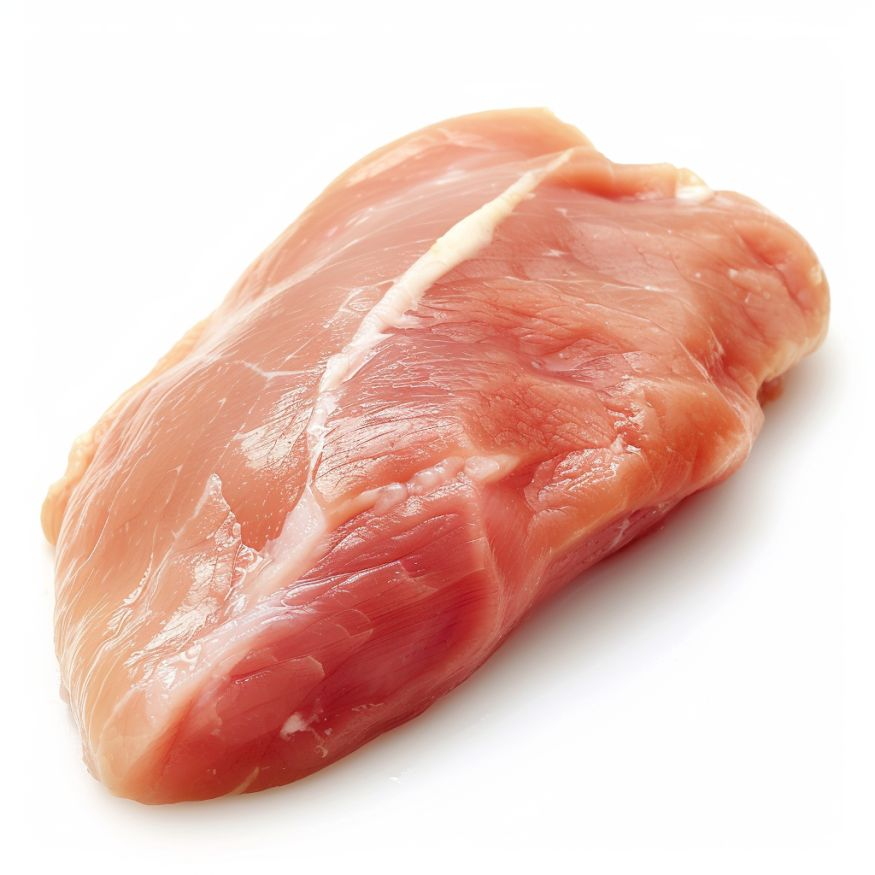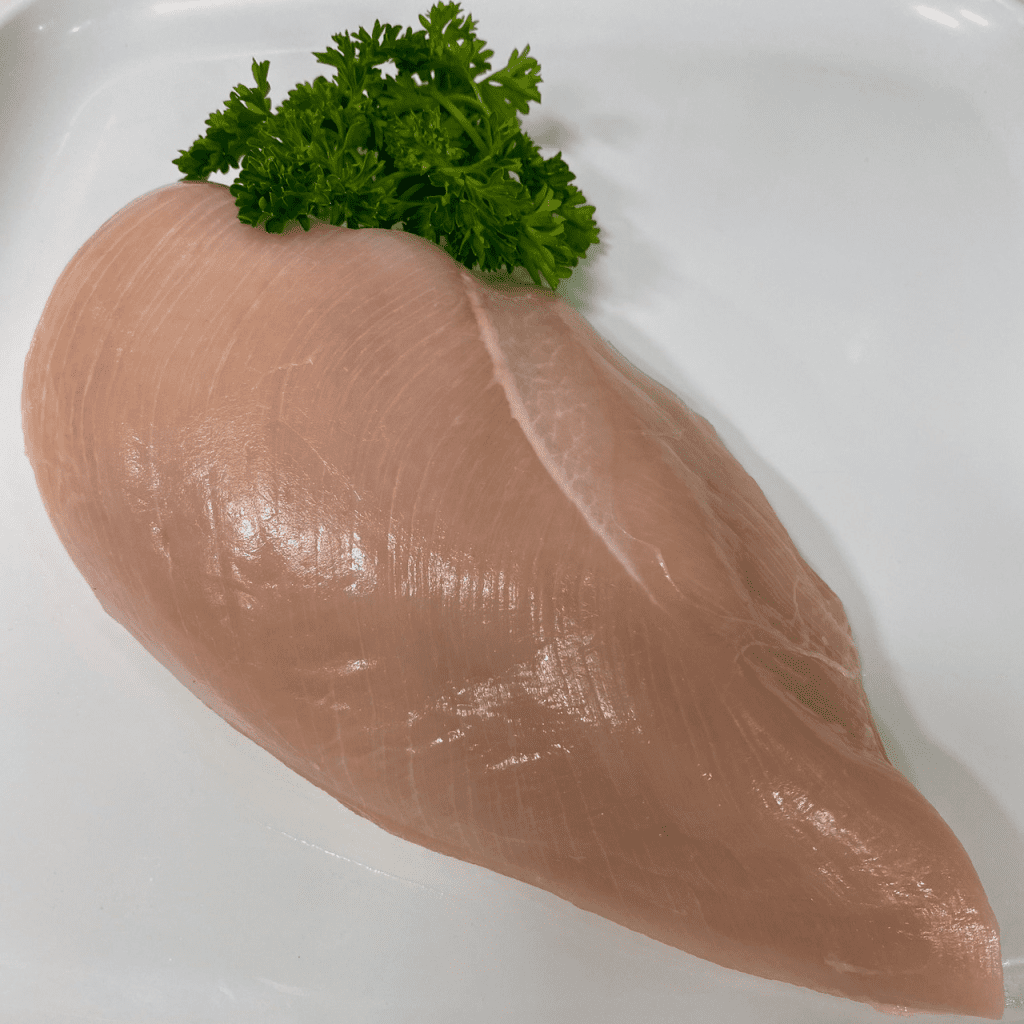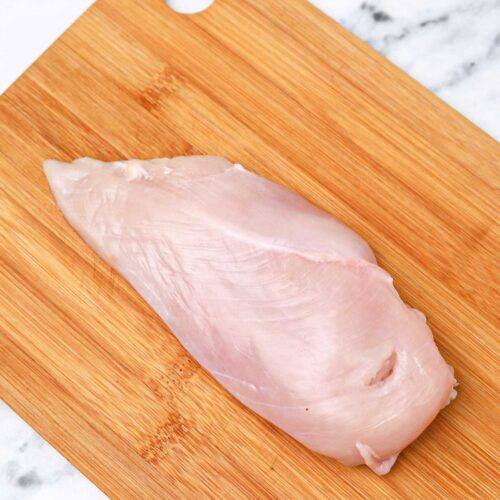Chicken breast is a staple in many diets, valued for its high protein content and lean profile. But have you ever noticed that some store-bought chicken breasts have lines running through them or a stringy texture? These characteristics aren’t just an oddity—they’re a sign of something more going on behind the scenes. Understanding what causes these changes can help you make more informed choices when purchasing chicken and ensure you’re getting the best quality for your meals.
What Causes Lines and Stringiness in Chicken Breasts?

Several factors contribute to these visual and textural changes in chicken breast. Let’s dive into what’s really going on and why some chicken breasts look and feel different from others.
1. Rapid Growth Rates in Industrial Farming
Modern farming methods prioritize fast growth to meet high demand, leading to larger chickens in shorter amounts of time. While this approach keeps costs down, it often comes with a downside. Rapid growth places stress on the chicken’s muscles, leading to abnormalities such as white striping and woody breast, which manifest as lines and stringiness in the meat.
These conditions are especially common in commercially raised chickens. The faster a chicken grows, the less time its muscles have to develop properly, resulting in fibrous tissues and uneven texture. This rapid growth might make production more efficient, but it can compromise the quality of the meat.
2. Myopathy: A Muscle Condition Linked to Abnormalities
The term myopathy refers to a muscular condition that can cause irregularities like white striping and woody breast. Both are forms of muscle degeneration linked to the accelerated growth practices in poultry farming. White striping appears as fat deposits running parallel to the muscle fibers, while woody breast creates a hard, rubbery feel in the meat.
These conditions not only affect texture but also reduce the protein content of the meat. Additionally, they can impact how the chicken tastes, often giving it a less flavorful profile. Myopathy-related abnormalities are becoming more prevalent in chicken products found in grocery stores.
3. Reduced Meat Quality Due to Intensive Farming Practices
When you see lines in chicken breast, it’s often a sign of lower meat quality. These visible lines indicate that the meat may contain higher levels of fat and less protein. The texture can become tough and less pleasant, and you might notice the meat doesn’t cook as evenly or retain moisture as well. All of these signs point to an issue of quality—factors that are important for both flavor and nutrition.
Health Implications of Lines and Stringy Texture in Chicken Breasts
The quality of chicken breast doesn’t just affect your culinary experience; it also has health implications. Here’s what you should consider when it comes to these abnormalities in chicken meat.
1. Lower Protein Content
Chicken breast is generally chosen for its high protein content. However, the stringy, lined texture you see can indicate a decrease in protein. The more muscle abnormalities present, the lower the protein content tends to be. As a result, you might not be getting the same nutritional value you expect from these cuts of chicken.
2. Higher Fat Content
White striping and visible lines often mean the chicken breast contains higher levels of fat. This happens because rapid growth doesn’t allow muscle to develop fully, leading to fat deposits in place of muscle tissue. While chicken breast is typically considered a low-fat meat option, these visible lines are a sign that it might be less lean and, therefore, not as healthy as it appears.
3. Potential Exposure to Growth Enhancers and Antibiotics
In some cases, the presence of lines and stringiness may indicate the use of growth-promoting substances. Although not always the case, certain farming practices involve using chemicals to speed up the growth process. The United States and other countries have regulations on growth enhancers in poultry, but concerns remain about how these substances might affect human health in the long term. Choosing organic or antibiotic-free chicken can be a way to reduce your exposure to these potential risks.
How Stringy Chicken Affects Cooking and Taste

Beyond health considerations, lines and stringy textures impact how chicken cooks and tastes. Here are some ways these abnormalities can affect your meals:
1. Tougher Texture and Chewy Meat
Stringy chicken tends to become tougher and less pleasant to eat once cooked. These tougher fibers don’t break down as easily during the cooking process, resulting in a rubbery or chewy texture. This can make meal preparation more challenging and leave you with less satisfying dishes.
2. Bland Flavor and Reduced Enjoyment
Chicken breasts affected by white striping or woody breast often lack the rich, savory flavor of high-quality poultry. The abnormal fat distribution can dilute the natural taste of the chicken, leaving you with a less flavorful meal. If you’re accustomed to the taste of fresh, organic chicken, the difference can be noticeable.
3. Quick Moisture Loss During Cooking
Abnormal chicken breast texture affects how well the meat retains moisture. During cooking, stringy chicken breasts can lose moisture faster, leading to a dry and unappetizing meal. This happens because the fibrous, uneven texture doesn’t hold onto juices as effectively as normal muscle tissue. As a result, it can be difficult to keep stringy chicken breast tender and juicy.
Making Informed Choices: What to Look for in Chicken Breasts

Knowing what to look for in chicken breasts can help you avoid these quality issues. Here are some tips to ensure you’re getting the best chicken for your health and taste preferences:
- Opt for Organic or Free-Range: Organic and free-range chicken often comes from farms that prioritize healthier growth practices, leading to better-quality meat. These chickens typically don’t experience the same rapid growth as commercial chickens, reducing the risk of muscle abnormalities.
- Check the Yolk Color: If you buy eggs from the same farm, note the yolk color. Chickens that produce rich, dark yolks are often healthier overall, and it may indicate that the same farm’s meat products are of higher quality.
- Look for Labels Like “Antibiotic-Free”: Choosing antibiotic-free chicken can help you avoid meat from animals treated with growth enhancers or other chemicals.
- Examine the Meat: Before buying, check for visible lines or a stringy texture. If you can’t inspect the meat directly, try purchasing from a local butcher or farmer where you can ask about how the chickens were raised.
Conclusion: Understanding What’s on Your Plate

The lines and stringiness you notice in chicken breasts aren’t just cosmetic—they’re clues about the quality and health of the meat. While the convenience and affordability of store-bought chicken breast are hard to beat, understanding what these characteristics mean can guide you to healthier choices. Opting for organic, free-range, or antibiotic-free chicken can reduce your exposure to low-quality meat and bring better taste and nutrition to your meals.
The next time you see lines in your chicken breast, remember: they’re telling a story about how that chicken was raised. Make informed choices and savor meals that are not only delicious but also nourishing.


